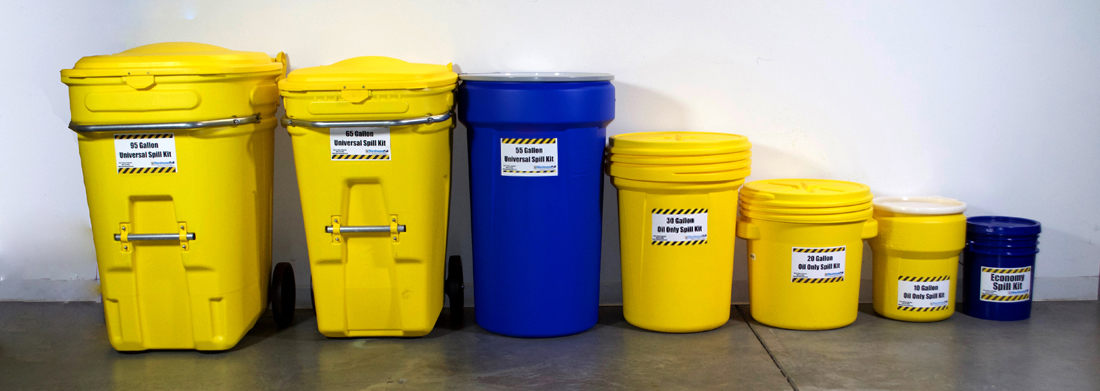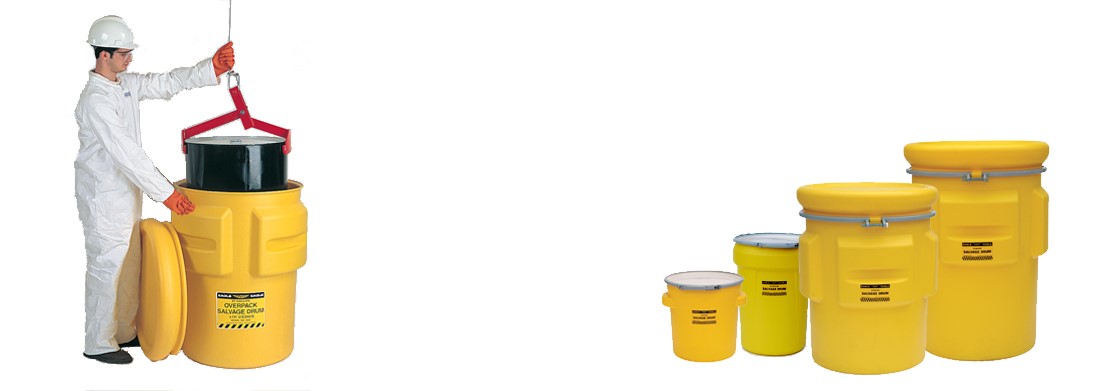Choosing the Right Spill Kit.
Why bother? Because whether we like it or not accidents will happen. If you handle chemicals, oils or other liquids then you need to have a plan in place to deal with a spill.
So where to start.
Make a good assessment of your workplace or facility.
You need to determine what kind(s) of spill kits you’ll need, what sizes and how many.
Identify your problem areas. Where are liquids stored and worked with? There may be multiple locations within your facility, loading dock, store room, lab, workshop or production line, where potential spills could occur. Could a single large spill kit service all locations or are multiple smaller kits a better solution?
Identify the liquids you handle. Most chemicals can be absorbed using “Universal” pads, socks and pillows. Oil only pads may be a better choice if you’re trying to keep oils and petroleum products out of the drainage stream as they won’t absorb water. Some chemicals may react adversely with any off the shelf solution. In that case you may need to supplement an existing spill kit with additional material to deal with your specialized needs.
Identify the size of your potential spills. Usually this is the largest container you typically store. Obviously you have a bigger problem if a 50 gallon drum gets punctured by a forklift vs. a 5 gallon pail getting knocked over by one of your workers. Do you intend to clean up the whole spill or just contain it? You may already have secondary containment (spill pallets, berms or dikes) that would contain the majority of the spilled liquid or you may have an outside company on call to clean up major spills.
How easily can you get to your potential spill areas? If you have a large open warehouse you might be able to service it with one or two larger wheeled spill kits. If you have a number of rooms with limited access you may want to station multiple smaller spill kits close to each work area.
Don’t forget the fleet. Delivery trucks and service vans are also potential spill risks. Portable truck kits can be stowed in tight spaces and provide enough protection to handle small spills or provide preliminary treatment of a larger one.

Determine the right spill kit for your needs.
A spill kit is a selection of absorbents, tools and personal protection equipment (PPE) that is positioned and available for use if and when you have a spill.
Typical spill kits contain Absorbents (pads, socks, and pillows), PPE (goggles, gloves) and bags or containers to collect and hold used cleanup materials.
Spill kits come in different flavors depending on the type of material to be soaked up.
- Universal – Treated Polypropylene absorbents soak up most common chemicals.
- Oil Only – Untreated Polypropylene absorbents soak up oils and petroleum based products but will not absorb water. These are often useful when you need to separate spills from standing water.
- Chemical – Treated Polypropylene, similar to Universal, but often color coded to indicate special handling is required.
Depending on your circumstances, you may want to supplement your spill kits with additional PPE, repair tools, cleanup tools, drain covers and containment dikes.
If you’ve gone through an assessment of your workplace then you should have a good idea of the quantity and sizes you need. You want enough material to deal with your worst case scenario and you want enough kits so you can easily reach one when you need it.

Where to place Spill Kits?
Like fire extinguishers, eyewash stations and first aid kits, spill kits should be located where they are likely to be used.
They should be easily accessible and well-marked.
In addition, you and your employees should become familiar with the contents and use of your spill kits. Remember, the wrong time to first read the instructions is when you need to use them.
Depending on the nature of the hazardous liquids that you handle, OSHA may require you and your employees to be trained as per the Hazwoper regulations https://www.osha.gov/html/faq-hazwoper.html. For liquids that pose less of a danger, training guidelines are not specified but still recommended.

Anything else?
Spill kits are designed for the immediate aftermath of a spill, but what do you do with the containers after the spill is contained? Salvage containers are UN rated containers that are big enough to contain your leaking package so that they can be properly transported and disposed of. Be sure to stock at least one or more in appropriate sizes in case of emergency.
Don’t forget that used absorbents and waste materials also need to be transported under the same hazmat rules that the original packing needed to follow. In most cases our spill kits come in an appropriate UN rated container but if not, make sure to have several on hand in case of emergency.
As the Boy Scouts say “Be Prepared”. Be aware of the potential risks in your workplace, determine how to deal with them and set a plan in place. At the end of the day we want everyone to go home safe and sound.

